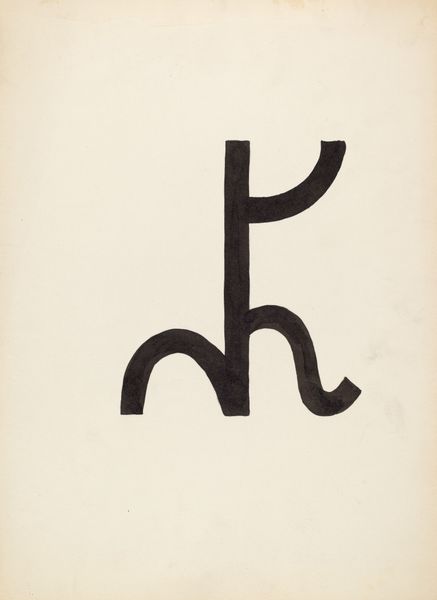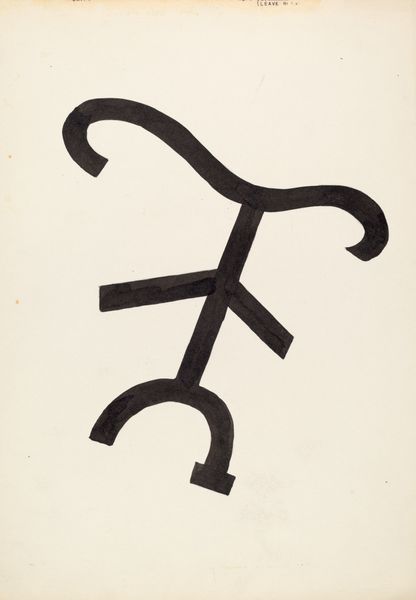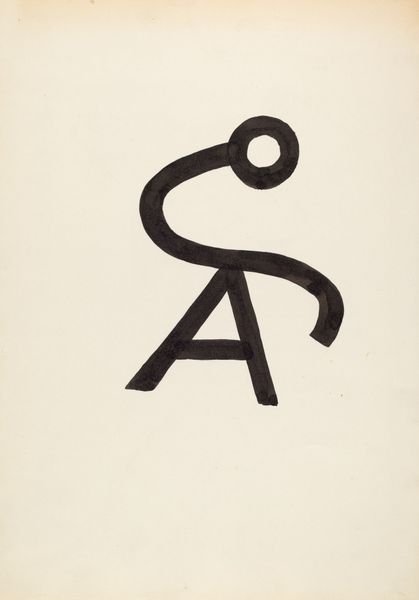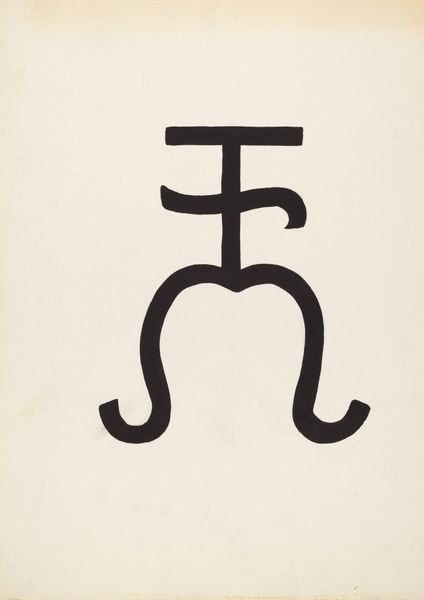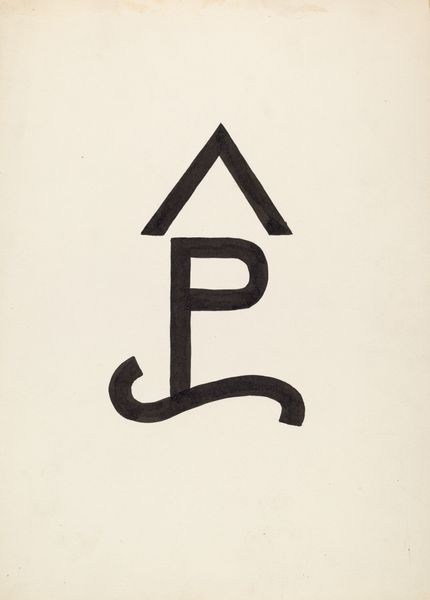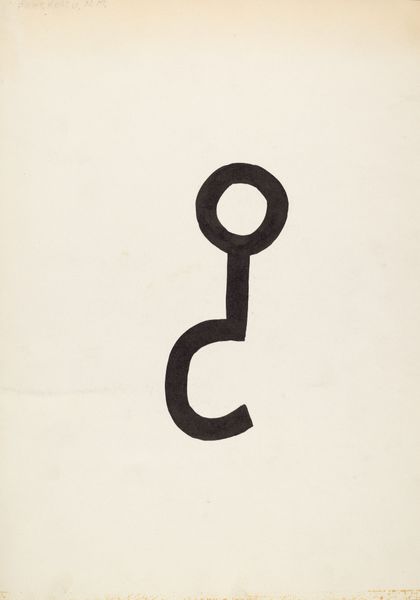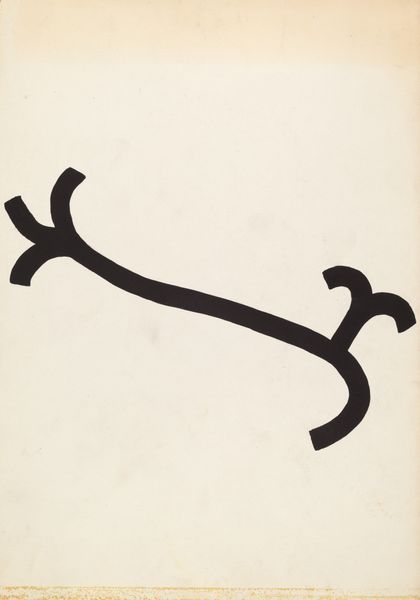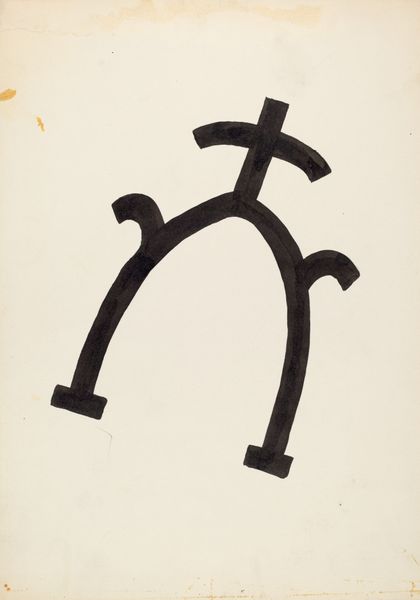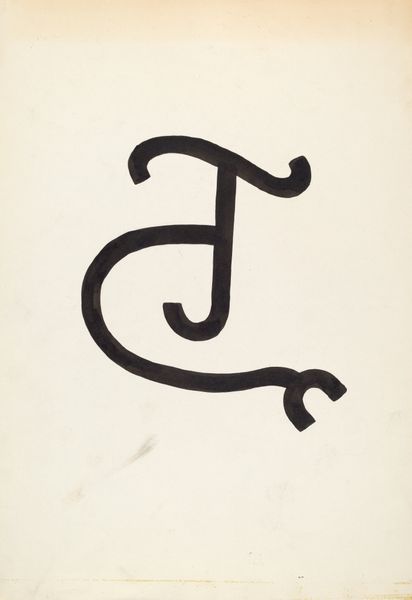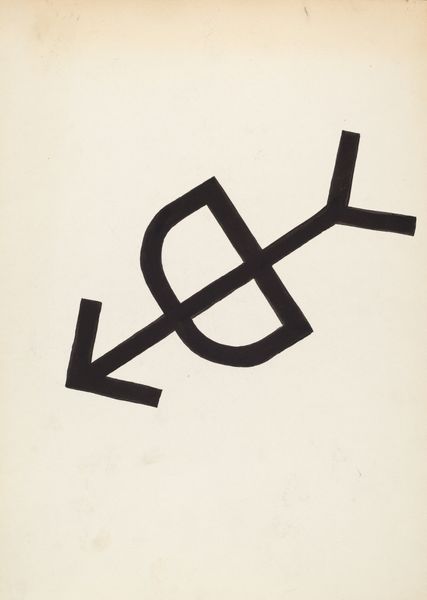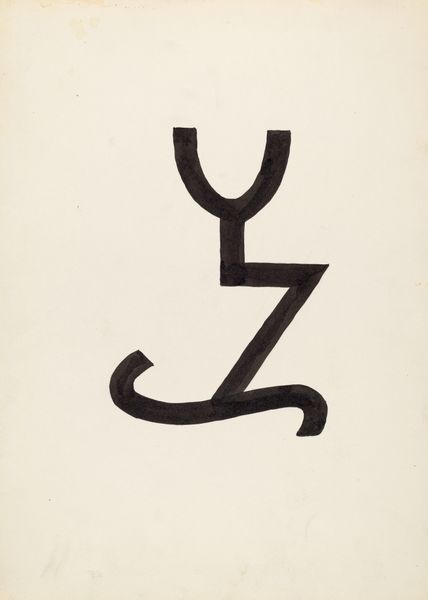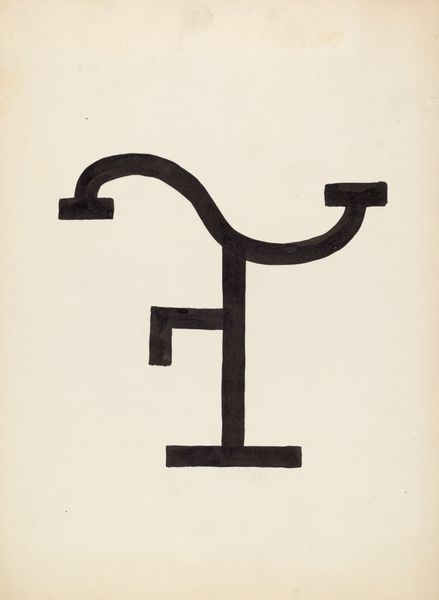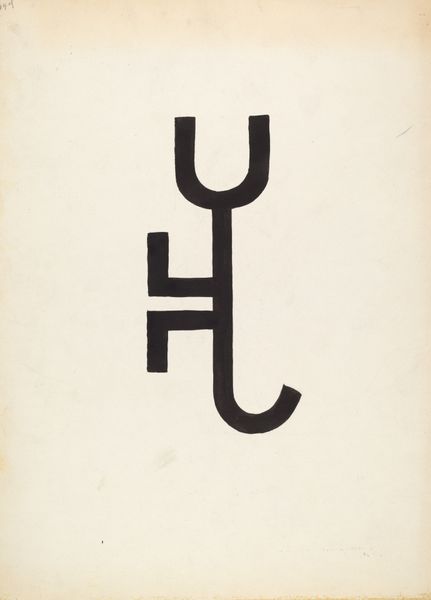
drawing
#
drawing
#
geometric
Dimensions: overall: 34.2 x 23.5 cm (13 7/16 x 9 1/4 in.)
Copyright: National Gallery of Art: CC0 1.0
Editor: We’re looking at “Cattle Brand,” a drawing made around 1936 by J. Henry Marley. It’s a bold, graphic image. It's just this symbol rendered in thick black lines against the stark white paper. I find the negative space really striking. How do you interpret this work? Curator: Let us examine the internal relations of the piece, divorced from its potential external referents. Observe the confident, unwavering line that forms the glyph. There’s a distinct tension between the rigid, verticality of the 'P' form, if we may call it such, and the fluid, almost calligraphic, curves that connect to it. Do you see how the weight of the line itself contributes to this tension? Editor: I do! The thick, consistent width gives it a real presence, but the contrast between the straight and curved sections makes it feel dynamic. Like it could almost be moving. Curator: Precisely. And consider the semiotic weight of the forms themselves. Are we seeing representations of letters, or simply abstract shapes that our minds attempt to categorize? The work exists in that liminal space. What then is signified, and by what rules? Editor: So, it’s about the tension between representation and pure form, right? Not necessarily what it IS, but what it DOES as a composition? Curator: Precisely. The drawing asks us to consider the language of shape and line, and how those elements construct meaning, or indeed, deconstruct it. Editor: I see. I was so ready to jump to its historical context, but looking at just the form… it’s a lot more complex than I initially thought. Curator: Agreed. Focusing on form opens new possibilities in meaning making.
Comments
No comments
Be the first to comment and join the conversation on the ultimate creative platform.
